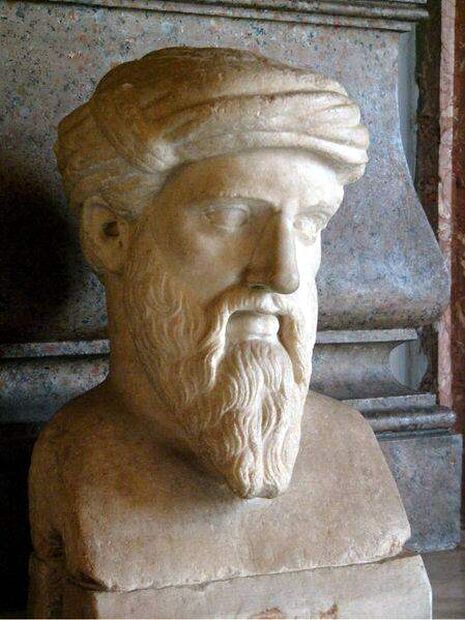Why did I ever learn about… Pythagoras’ theorem
In the first of a series of articles on the science and maths we learnt at school Joel Gould explores the many uses of that notorious piece of GCSE maths, Pythagoras’ theorem

I’m sorry to begin in such a controversial fashion, but Pythagoras probably didn’t discover the famous rule attributed to him. Ancient texts suggest that right-angled triangles were well understood by Babylonian and Indian societies.
However, please don’t take this to mean that all maths teachers are liars and frauds who should be given severe jail sentences. The earliest proof of the theorem is traditionally ascribed to Pythagoras, although the evidence backing up this tradition is about as trustworthy as an email from a Nigerian prince. Pythagoras was head of a secretive school, and as such there is no real proof he worked on the problem himself.
Pythagoras’ theorem is startlingly simple: c squared equals a squared plus b squared. In words, in a right-angled triangle, the square of the hypotenuse (the side opposite the right angle) is equal to the sum of the squares of the other two sides.
Laughing in the face of this simplicity are the consequences and applications of the theorem, which go far beyond the mundane.
Einstein’s formulation of his theory of special relativity required nothing more than some basic physics (speed equals distance over time), his considerable brainpower and, of course, Pythagoras’ theorem. It is incredible to think that a theory which changed our perception of space and time is one we all learn about at school.
The theorem can even be used by crime scene investigators, to determine a bullet's path, and where a shot was fired from. Even blood splatter from an assault can be analysed in this way, allowing the famous formula to help convict criminals millennia after its conception.
The theorem has the ability to capture the imagination and inspire in a way that no other piece of mathematics seems to. Many of history’s greatest minds have been sufficiently captivated to devote their time to creating geometrical or algebraic proofs of the theorem. Da Vinci, Leibniz, Einstein and even U.S. President James Garfield all have such proofs attributed to them.
At a practical level, the theorem is used by many on a day to day basis. Architects, engineers, carpenters, farmers and mathematicians are united under the (triangular) flag of Pythagoras.
As Einstein once wrote of Pythagoras’ theorem: “it is marvelous enough that man is capable at all to reach such a degree of certainty and purity in pure thinking”. Therein lies the beauty of the theorem: it is pure, simple and to the point. While many of the laws of mathematics appear complex, abstract or unapproachable, Pythagoras’ theorem is accessible and useable. This is what makes c squared equals a squared plus b squared so powerful.
 News / Caius mourns its tree-mendous loss23 December 2025
News / Caius mourns its tree-mendous loss23 December 2025 Comment / Yes, I’m brown – but I have more important things to say22 December 2025
Comment / Yes, I’m brown – but I have more important things to say22 December 2025 News / Clare Hall spent over £500k opposing busway 24 December 2025
News / Clare Hall spent over £500k opposing busway 24 December 2025 Interviews / Politics, your own way: Tilly Middlehurst on speaking out21 December 2025
Interviews / Politics, your own way: Tilly Middlehurst on speaking out21 December 2025 News / King appoints Peterhouse chaplain to Westminster Abbey22 December 2025
News / King appoints Peterhouse chaplain to Westminster Abbey22 December 2025








